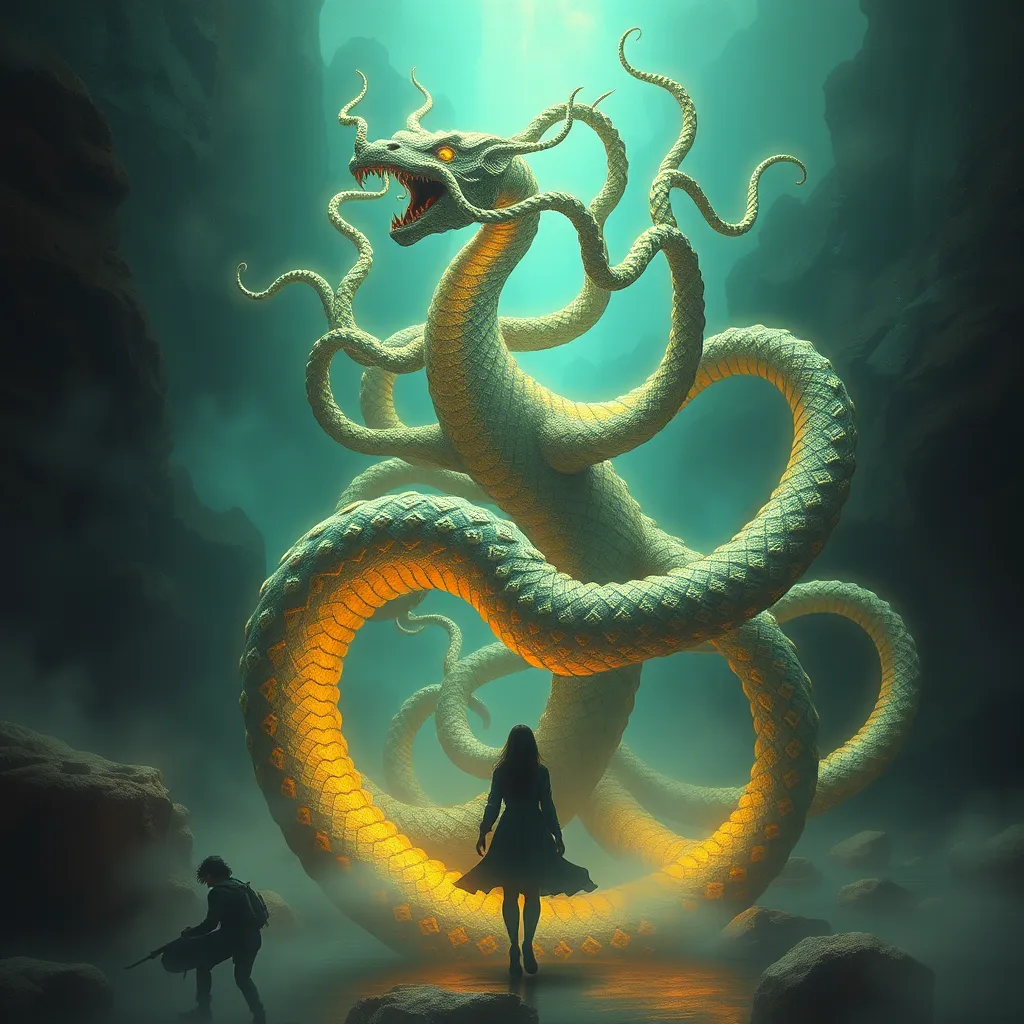The Hydra in Music: Exploring the Monster’s Influence on Musical Compositions
I. Introduction
The Hydra, a formidable creature from Greek mythology, is often depicted as a serpentine monster with multiple heads. Each time one head is severed, two more grow back in its place, making it a symbol of regeneration and resilience. The Hydra’s presence in myth not only highlights the struggle of heroes like Hercules but also serves as a profound symbol that resonates through various forms of art, including music.
This article aims to explore the Hydra’s influence on musical compositions, examining how this mythological creature has inspired composers and musicians across different eras and genres. By delving into the historical context and thematic interpretations of the Hydra, we can uncover the layers of meaning embedded in musical works inspired by this legendary monster.
II. Historical Context of the Hydra in Mythology
The origins of the Hydra myth can be traced back to ancient Greece, where it was described in various texts, most notably in the works of Hesiod and Apollodorus. The creature was said to inhabit the swamp of Lerna, terrorizing the surrounding regions.
In terms of characteristics, the Hydra is often characterized by its many heads, which symbolize not only danger but also the complexity of challenges faced by heroes. The act of slaying the Hydra, particularly by Hercules during his second labor, represents the struggle against seemingly insurmountable obstacles.
Beyond its narrative role, the Hydra has influenced art and literature, appearing in countless paintings, sculptures, and literary works throughout history. Its dual nature—as both a monstrous figure and a symbol of perseverance—has made it a compelling subject for exploration in various artistic endeavors.
III. The Hydra as a Musical Metaphor
In music, the Hydra can be interpreted as a metaphor for complex emotional states and multifaceted themes. Just as the Hydra possesses multiple heads, musical compositions can explore various themes and emotions simultaneously, creating a rich tapestry of sound.
Composers often use the Hydra to represent the struggle between good and evil, the conflict of emotions, or the cyclical nature of life and death. This complexity allows musicians to convey a wide range of feelings, from despair to triumph.
Some notable examples of musical compositions inspired by mythological creatures include:
- Richard Wagner’s “Der Ring des Nibelungen,” which features themes of struggle and transformation.
- Benjamin Britten’s “The Rape of Lucretia,” which explores deep emotional turmoil and conflict.
- Igor Stravinsky’s “The Firebird,” where mythical themes are intertwined with vivid musical storytelling.
IV. Notable Compositions Featuring the Hydra
Numerous classical pieces draw inspiration from the Hydra. For instance, symphonic poems and operas often employ the creature as a thematic element to convey conflict and resolution. A notable example is Hector Berlioz’s “La Damnation de Faust,” where the Hydra serves as a representation of temptation and peril.
In modern interpretations, contemporary composers have revisited the Hydra myth, using electronic music and experimental forms to convey the creature’s essence. For example, the band “Symphony of the Night” has a track titled “Hydra,” which integrates progressive rock elements to depict the monster’s mythos.
Specific works that embody the Hydra’s essence include:
- John Adams’ “Nixon in China,” which reflects on multifaceted political struggles.
- Philip Glass’ “The Civil Wars,” where the themes of conflict and resolution are prevalent.
V. The Hydra’s Influence on Musical Genres
The Hydra’s influence spans various musical genres, each interpreting the creature’s symbolism in unique ways. In orchestral and symphonic music, the Hydra often embodies the struggle between contrasting themes, creating a dynamic listening experience.
In opera and vocal works, composers utilize the Hydra to explore themes of betrayal, love, and loss. The operatic portrayal of the Hydra often emphasizes dramatic tension and emotional depth, as seen in works like Wolfgang Amadeus Mozart’s “The Magic Flute,” where mythological elements are woven into the narrative.
Popular music genres, such as metal and rock, also draw from the Hydra’s imagery. Bands like “Metallica” and “Dream Theater” have incorporated themes of struggle and resilience, often using mythological references to deepen their lyrical content.
VI. Thematic Analysis of Hydra-Inspired Works
Common themes associated with the Hydra in music include:
- The struggle against adversity and the embodiment of resilience.
- The duality of human nature, portraying both light and dark elements.
- Transformation and the cyclical nature of life.
These themes often manifest through emotional and narrative aspects drawn from the myth. Composers utilize various musical techniques—such as contrasting dynamics, thematic development, and orchestration—to convey the Hydra’s characteristics. The use of dissonance, for instance, may evoke feelings of tension and conflict, while melodic resolution can symbolize triumph over adversity.
VII. The Hydra in Contemporary Music Culture
In recent years, there has been a resurgence of mythological themes in modern compositions, with many artists looking to the past for inspiration. The Hydra, in particular, continues to captivate contemporary musicians, offering a rich source of narrative and emotional depth.
The influence of the Hydra is evident in film scores and soundtracks, where composers like Hans Zimmer and Howard Shore have incorporated mythological elements to enhance storytelling. The Hydra serves as a symbol of resilience in current musical narratives, often representing the struggles faced by individuals in a tumultuous world.
VIII. Conclusion
In summary, the Hydra’s impact on musical compositions is profound, resonating through various genres and styles. Its symbolism of struggle and resilience continues to inspire artists, reflecting the enduring legacy of myth in music. As we look to the future, the Hydra will undoubtedly remain a source of inspiration, inviting musicians to explore the complexities of human emotion and experience through its multifaceted lens.
Ultimately, the Hydra stands as a testament to the power of myth in shaping artistic expression, reminding us that the challenges we face can lead to profound creative exploration and transformation.




